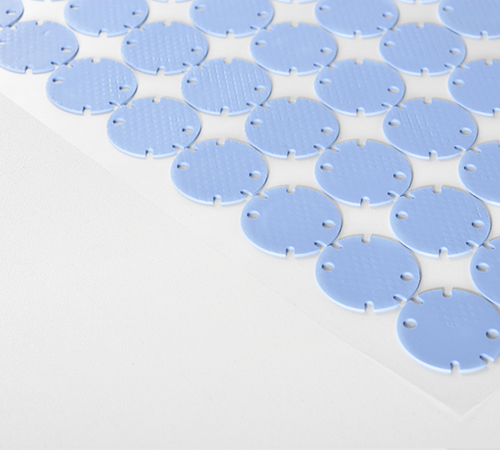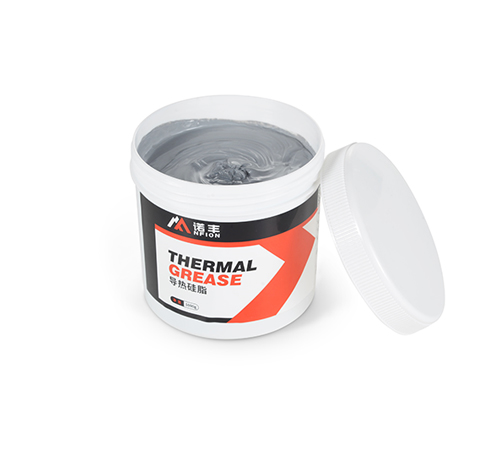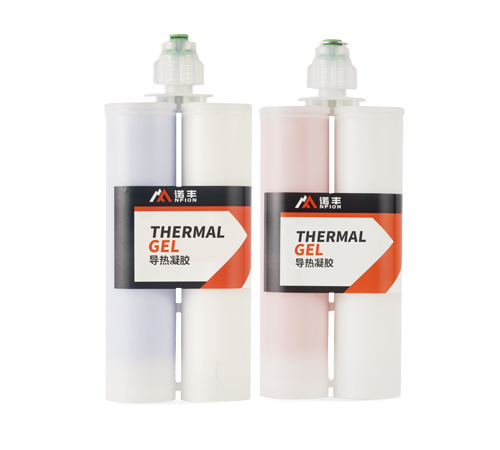In modern data centers and network communication systems, network switches play a critical role in high-speed data exchange and routing. With the increasing data flow and computing demands, the power density of network switches has gradually increased, causing heat buildup to become a significant issue. Therefore, effectively managing the heat generated by switches and ensuring stable operation under high loads has become a critical aspect of device design and performance maintenance.
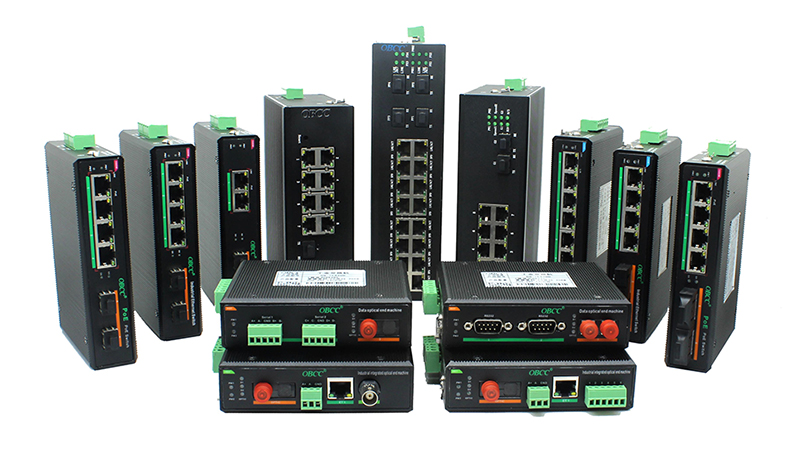
Introduction to Network Switches
A Network Switch is a common device in computer networks, mainly used to connect multiple computers or other network devices and forward data from one device to another based on the target address in the data packet. A network switch typically operates at the Data Link Layer (Layer 2) of the OSI model, but it can also perform routing functions at the Network Layer (Layer 3).
Structure of a Network Switch
● Switching Chip: Responsible for processing and forwarding data packets, the switching chip is the core of the network switch.
● Ports: Network switches have multiple ports to connect different devices or networks.
● Memory: Used to store the switch's configuration data and cache data packets, ensuring efficient data transmission.
● Power System: Provides stable power to the entire switch.
Basic Functions of a Network Switch
● Data Forwarding: The switch receives data packets from a device in the network and forwards them to the target device based on the destination MAC address in the packet.
● MAC Address Learning: The switch observes the MAC addresses of devices on the network and continuously builds a MAC Address Table (also called a forwarding table). This table stores the MAC address of each device and the port it is connected to, enabling accurate data forwarding.
● Full-Duplex Communication: Switches support full-duplex mode, allowing simultaneous data transmission and reception, which improves network efficiency.
● Flow Control: By controlling the transmission rate and traffic on each port, the switch effectively prevents network congestion.
Types of Network Switches
● Unmanaged Switches: These switches offer no configuration options and are typically used in small or simple home networks. They are plug-and-play and very easy to use.
● Managed Switches: Managed switches provide more control and configuration capabilities. Users can configure them through a web interface or command line. They support advanced features like traffic monitoring, VLAN segmentation, and link aggregation, making them suitable for enterprise-level networks.
● Smart Switches: Smart switches fall between unmanaged and managed switches. They provide some basic configuration options, such as VLAN support and port management.
Roles and Applications of Network Switches
● Local Area Network (LAN) Construction: Switches are commonly used in LANs to connect various devices, such as computers, printers, and servers, ensuring fast and accurate data transmission.
● Data Centers: In data centers, switches are used to connect large numbers of servers and storage devices, ensuring efficient transmission of high-volume data.
● Industrial Automation: Switches are widely used in industrial control systems to ensure real-time data transmission and control.
● Improving Network Performance: By reducing data collisions and improving bandwidth utilization, switches help enhance overall network performance, especially in environments with many devices and heavy data traffic.
Network switches play a crucial role in modern networks, especially as data traffic continues to increase. Proper switch design and selection can ensure network stability and efficiency.
With the enhancement of switch functions, especially high-end switches processing large-scale data flows, power consumption gradually increases, and heat buildup becomes more prominent. Therefore, effective thermal management is essential, and thermal interface materials play a key role in solving this issue.
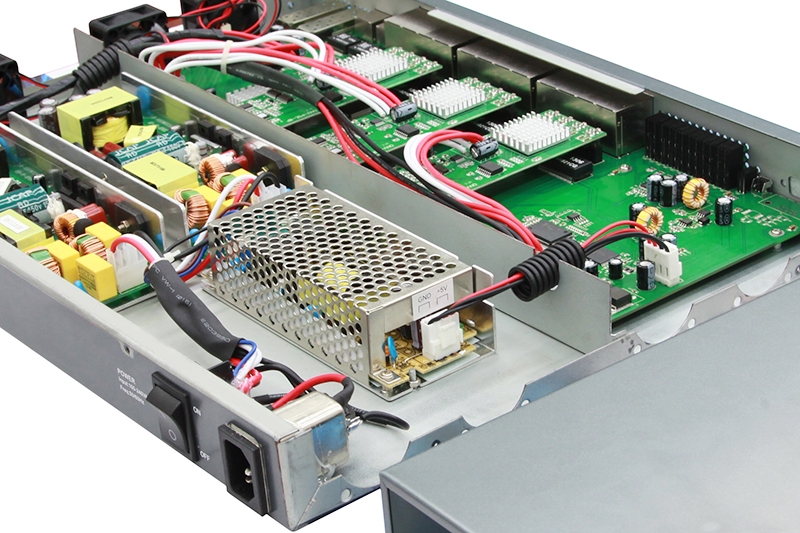
Thermal Challenges of Network Switches
As the functions of switches continue to enhance and their data processing capabilities improve, the power consumption and heat generation of switches increase. This is particularly true for high-performance switches, where the power density of electronic components is rising, leading to more concentrated heat buildup. Below are the main thermal challenges faced by network switches:
1. Increased Power Density: The widespread use of high-speed switches and high-performance chips leads to a significant increase in heat generation. The heat accumulates in confined spaces, requiring the thermal management system to efficiently dissipate it to prevent overheating.
2. Limited Space: As the size of switches continues to shrink, internal space becomes more constrained. Limited space restricts the design and use of heat sinks, making thermal management more challenging.
3. High Load Operating Environment: Under heavy load, heat continually accumulates within the switch, which can lead to performance degradation or component damage if not managed effectively.
4. Long-Term Stable Operation: Network switches are typically required to operate 24/7. Therefore, their thermal management system must maintain stable and efficient operation over extended periods to avoid overheating, failures, or shortened device lifespans.
As the performance of network switches increases, especially high-end switches handling large-scale data flows, power consumption gradually rises, and heat buildup becomes more pronounced. Therefore, effective thermal management is crucial, and thermal interface materials play a vital role in solving this issue.
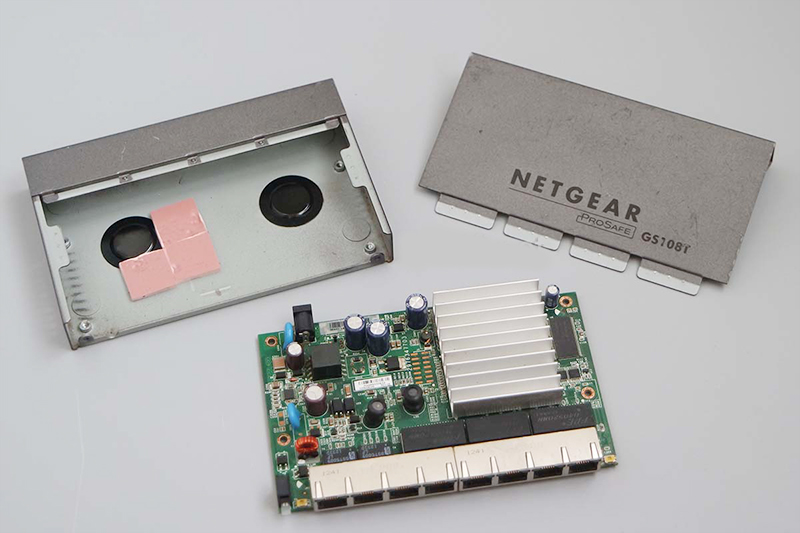
To address the thermal challenges of network switches, NFION offers a range of highly effective thermal interface materials. These materials not only feature excellent thermal conductivity but also remain stable in extreme environments, meeting the high thermal management requirements of modern network switches. Below are the main solutions provided by NFION:
1. Thermal Silicone Pads: NFION's thermal silicone pads are widely used between heat sources and heat dissipation systems in network switches. These materials offer high thermal conductivity and excellent compressibility, effectively filling small gaps at the thermal interface to ensure rapid heat transfer. The elasticity of the silicone pads allows them to maintain good contact even as they expand or contract due to temperature changes, preventing thermal contact issues.
2. Thermal Grease: Thermal grease is primarily used between electronic components and heat sinks to facilitate efficient heat transfer from high-power components to the heat dissipation system. NFION's thermal grease offers excellent thermal conductivity and good spreadability, allowing it to be evenly applied to irregular contact surfaces, improving heat transfer efficiency and reducing thermal resistance.
3. Thermal Gel: Thermal gels, with their high thermal conductivity and low thermal resistance, are ideal for applications requiring large-area thermal contact. NFION's thermal gels not only provide excellent heat conduction capabilities but also possess a certain degree of flexibility, allowing them to adapt to complex or irregular thermal interfaces and maintain long-term, efficient heat dissipation.
4. Thermal Bonding Adhesive: Thermal bonding adhesives are suitable for thermal interfaces requiring strong adhesion, especially in applications where heat sinks and electronic components need to be firmly bonded. These materials offer good thermal conductivity and strong adhesive properties, ensuring stable heat transfer performance even under high-temperature conditions.
Application Value of NFION Thermal Materials
NFION’s thermal interface materials not only meet the thermal management needs of network switches in terms of performance but also demonstrate substantial application value in real-world use:
1. Improved Device Reliability: Thermal materials effectively transfer heat generated within network switches, preventing overheating that could lead to component damage or performance degradation, thus enhancing the reliability and stability of the devices.
2. Extended Device Lifespan: By reducing heat buildup and hotspot temperatures, thermal materials help delay the aging of devices, extending the lifespan of network switches. This provides significant economic value to data centers and enterprise users.
3. Enhanced Operational Efficiency: Efficient thermal management keeps devices operating within their optimal temperature range, ensuring stable performance. Under heavy loads, thermal materials can prevent performance degradation caused by poor heat dissipation, improving the operational efficiency of network switches.
4. Optimized Space Design: NFION's thermal materials are designed to be thin and provide excellent thermal conductivity without occupying excessive space. For network switches, which have limited space, these materials improve heat dissipation without increasing the size of the equipment, optimizing the overall design.
5. Adaptability to High-Density Deployment: As network switches become increasingly powerful, the density of device deployment continues to rise. Thermal materials play a crucial role in addressing the heat buildup caused by high-density deployments, ensuring that switches can operate stably in complex environments over long periods.

Conclusion
With the continuous improvement in the performance of network switches, the role of thermal interface materials becomes more important. NFION offers a range of solutions that provide high thermal conductivity, low thermal resistance, and high stability, effectively addressing thermal issues in network switches. Whether under high-temperature, high-load conditions or within space-constrained designs, NFION’s thermal silicone pads, thermal grease, thermal gels, and thermal bonding adhesives all contribute to enhanced heat transfer efficiency, reduced device temperatures, and extended lifespan. As technology continues to evolve, NFION will keep providing advanced thermal management solutions, helping network switches maintain exceptional performance and reliability in increasingly complex and demanding environments.




 CN >
CN >
